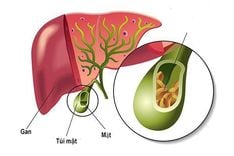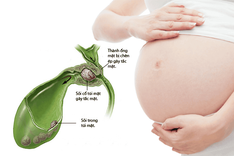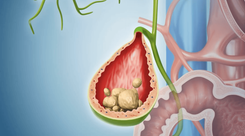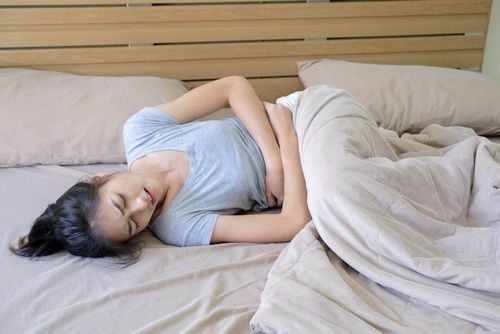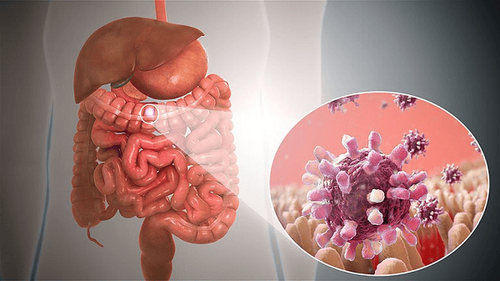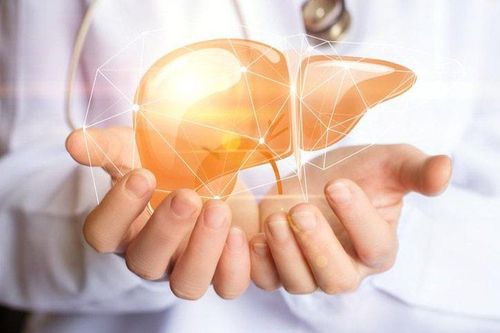Written by Mai Vien Phuong M.D M.S - Department of Examination and Internal Medicine - Vinmec Central Park International General Hospital
Normal stool can vary in shades of brown, primarily due to diet. If your stool is pale or clay-colored, you may have an issue with your biliary system, including the gallbladder, liver, and pancreas.
1. What is pale stool?
Bile produced by the liver gives stool its brown color. If your liver doesn't produce enough bile or if the flow of bile is blocked, your stool may become pale or clay-colored.
Occasional pale stools may not be a cause for concern. However, if it happens frequently, you may have an underlying medical condition. It's advisable to consult a doctor whenever you notice pale or clay-colored stool to rule out any serious diseases.
2. Medical conditions that can lead to pale stool
There are many possible causes of pale stool. Some common causes include:
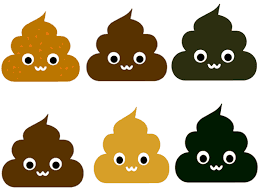
2.1. Medications
Certain medications such as: Nonsteroidal anti-inflammatory drugs like ibuprofen (Advil) and naproxen (EC-Naprosyn), birth control pills, some antibiotics, and anabolic steroids can cause drug-induced hepatitis. Drug-induced hepatitis is a condition in which the liver becomes swollen or inflamed due to medication.
Drug-induced hepatitis associated with stool color changes resolve within a few weeks after stopping the medication in most people.
2.2. Viral hepatitis
Viral hepatitis is a condition in which the liver becomes swollen or inflamed due to viruses such as hepatitis A, B, or C. Hepatitis C often leads to liver disease.
Doctors can diagnose the type of hepatitis virus in your body and help you develop the best treatment plan.
2.3. Alcoholic hepatitis
Alcoholic hepatitis is swelling or inflammation of the liver caused by excessive alcohol consumption. Alcoholic hepatitis can lead to liver disease or liver failure.
To treat this type of hepatitis, you have to stop drinking alcohol. Doctors can help remove if you have become dependent on alcohol. Alcoholic hepatitis can also cause malnutrition, so you may also need to follow a special diet to get the vitamins and other nutrients you need.
Medications such as prednisone (RAYOS) and pentoxifylline (Pentopak) may also be used to treat hepatitis.
In severe cases, a liver transplant may be necessary.
2.4. Biliary cirrhosis
Biliary cirrhosis is a condition where the bile ducts in the liver become inflamed or irritated. This inflammation or irritation blocks the flow of bile to the intestine. The exact cause of biliary cirrhosis is unknown. There is no cure for biliary cirrhosis, and this condition can be fatal.
Treatment can help control symptoms and prevent complications. Medications commonly prescribed include cholestyramine (Questran) to treat itching and ursodiol (Urso Forte) to help remove bile from the blood.
Your doctor may also recommend supplements of vitamins A, K, E, and D to replace nutrients lost in fatty stools. Calcium supplements may also help prevent bone loss.
In severe cases, doctors may recommend a liver treatment.
2.5. Gallstones
Gallstones are hard deposits that form inside the gallbladder and can block the flow of bile.
Medications can sometimes dissolve gallstones. You may need surgery to remove gallstones if they are large or if medications are ineffective.
2.6. Primary Sclerosing Cholangitis
Primary sclerosing cholangitis is a condition in which the bile ducts, that carry bile throughout the body, become inflamed or scarred. The exact cause of this condition is unknown, but genetics may play a role.
Both medications and surgery are applicable treatments for primary sclerosing cholangitis. Medications commonly prescribed include:
- cholestyramine (Questran)
- prednisone (RAYOS)
- ursodiol (Urso Forte)
- azathioprine (Azasan)
- cyclosporine (Sandimmune)
Your doctor may also indicate vitamins A, D, E, and K to replace what your body has lost, and also prescribe antibiotics.
Common surgeries used to treat primary sclerosing cholangitis include:
- Endoscopic balloon: A balloon at the end of a long tube is inserted into the bile duct to open any narrowed areas.
- Biliary stent placement: A stent is placed in a narrowed area of the bile duct.
- Colon and rectal resection in severe cases
- Liver transplantation
2.7. Structural defects in the biliary system
You may be born with structural defects in the biliary system that prevent the flow of bile.
After a physical examination, your doctor may order some tests to determine if you have a structural defect. These tests may include blood tests, scans, and X-rays.
Your doctor may perform surgery to correct the defects. The type of defect will determine the type of surgical procedure your doctor will use.
2.8. Bile ducts
Gallbladder removal surgery can lead to a narrowing of the bile ducts. This condition is called biliary stricture.
Doctors can correct the problem using surgery or by placing a stent. A stent is a small tube that a surgeon places inside the ducts to keep them open so bile can flow freely.
2.9. Tumors
Benign tumors (non-cancerous) or malignant tumors (cancerous) in the biliary system can obstruct the flow of bile or cause inflammation of the liver.
Your doctor may perform surgery to remove the tumor. If the tumor is cancerous, you may need radiation therapy, a treatment that uses X-rays or gamma rays to kill cancer cells. Chemotherapy may also be used. This is the use of powerful drugs to kill cancer cells.
2.10. Cysts
Cysts on the bile ducts can block the flow of bile.
Cysts may disappear without treatment or your doctor may perform surgery to remove them. Surgery is performed endoscopically with small incisions and is less invasive than traditional surgery.
3. Complications of pale stool
3.1. Pale stool in adults
One of the most common complications of pale stool is jaundice. This is due to the buildup of bile in your body. Jaundice is a yellowing of the skin or the peripheral area of the whites of your eyes. See a doctor immediately if you have signs of jaundice as it can also be a symptom of liver disease.
3.2. Pale stool in children
Light-colored stool in children is often due to brightly colored foods such as breakfast cereals. However, pale, white, or clay-colored stool in children can be due to more serious causes. Some causes include:
- A milk-only diet
- Barium sulfate from a barium enema
- Antacids
- Blocked bile ducts or liver disease
You should contact your doctor whenever your child's stool changes color, especially if your child has not eaten any brightly colored foods or if the stool is pale, white, or clay-colored. Only your doctor can determine the exact cause and recommend appropriate treatment.
If the cause is food or medication, eliminating them from your child's diet will clear up the condition. If the cause is liver disease or blocked bile ducts, this can be life-threatening and may require surgery or medication.

4. Diagnosing pale stool
Your doctor will ask you questions about your accompanying symptoms and any medications you are taking. Your doctor may also perform tests to help diagnose the cause of your pale stool. Tests may include:
- Blood tests to check for infection and jaundice
- Computed tomography (CT) scan to see if you have a swollen liver or bile ducts
- Magnetic resonance cholangiopancreatography (MRCP): A special type of magnetic resonance imaging (MRI) that gives detailed images of the biliary system
- Abdominal ultrasound to develop images of your organs
- Endoscopic esophagogastric duodenography or Endoscopic retrograde cholangiopancreatography to diagnose diseases of the bile ducts.
Once the underlying cause of your pale stool is treated, your stool will return to its normal brown color. However, some causes, such as liver disease and some cancerous tumors, cannot be cured. If the cause is incurable, you will continue to pass pale or clay-colored stools.
Some causes of pale stool cannot be prevented, but others can. Some forms of hepatitis have vaccines to prevent them. Alcoholic hepatitis can be prevented by not drinking excessive amounts of alcohol. If the cause is unknown, try to maintain healthy bowel movements by eating a balanced diet high in fiber.
To arrange an appointment, please call HOTLINE or make your reservation directly HERE. You may also download the MyVinmec app to schedule appointments faster and manage your reservations more conveniently.

